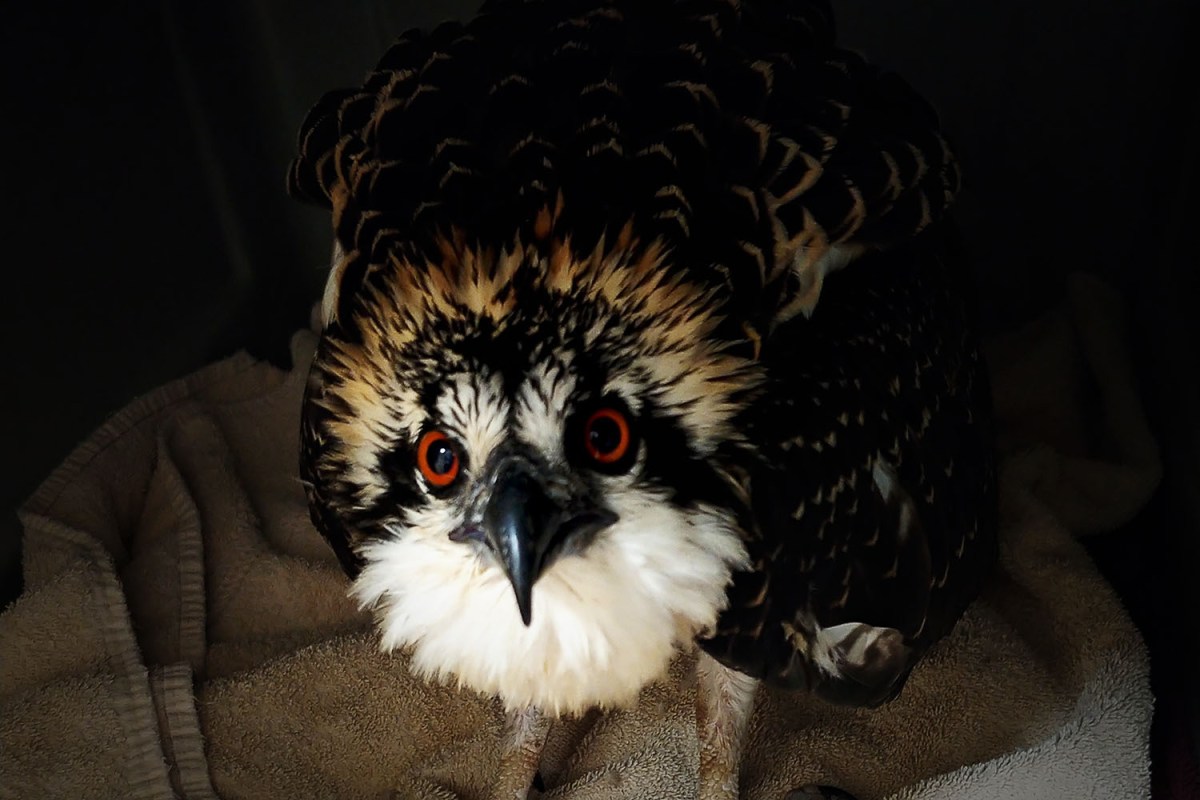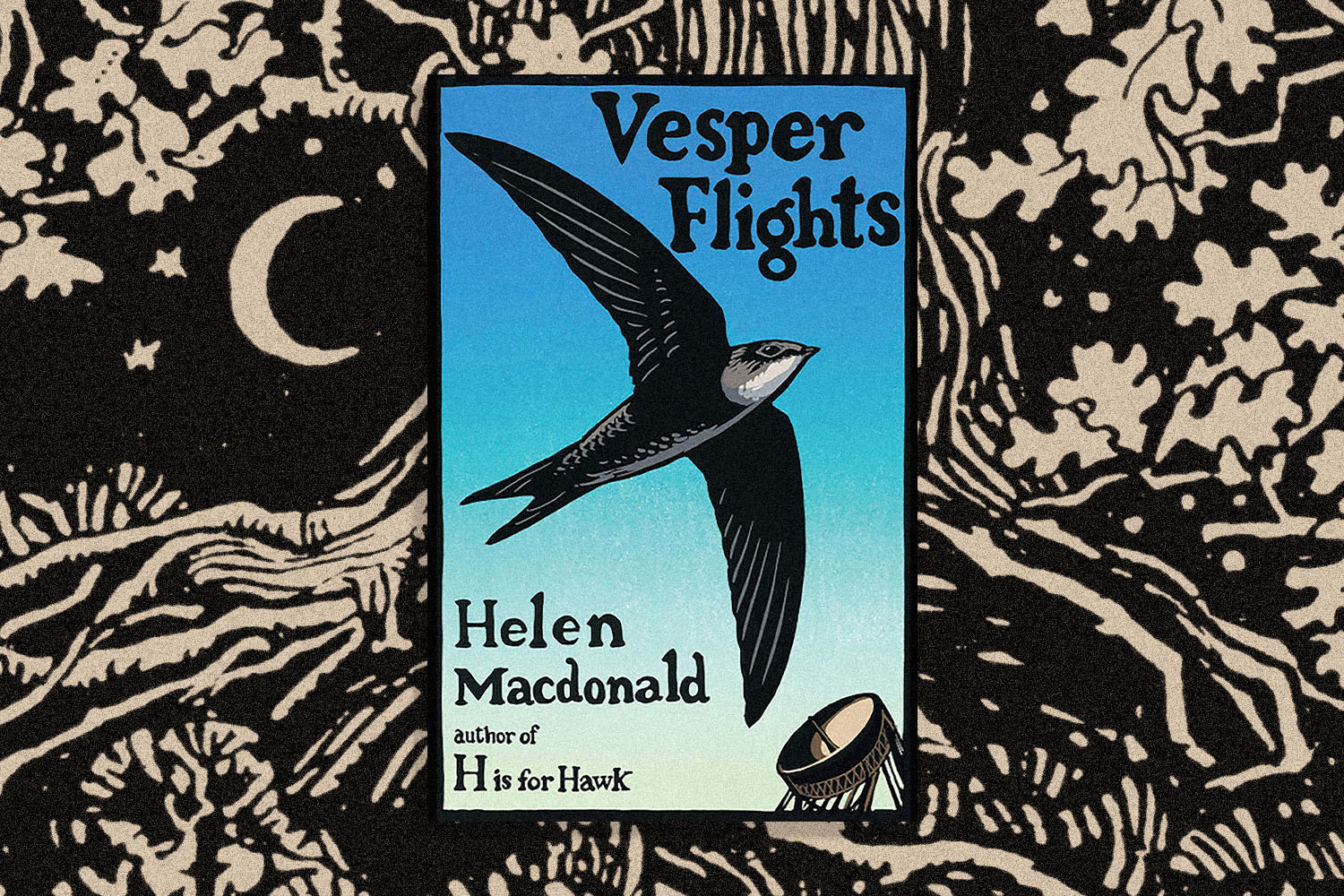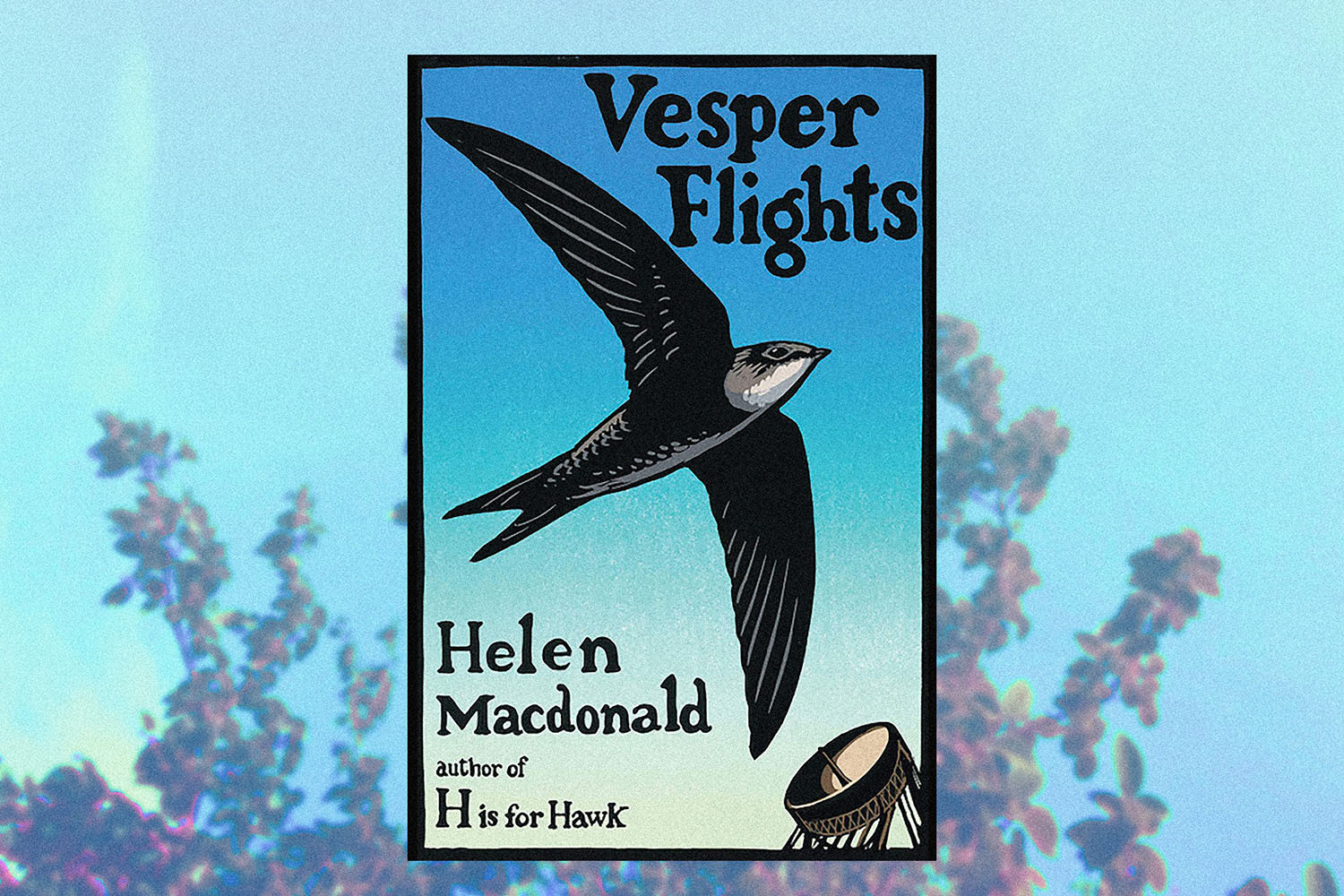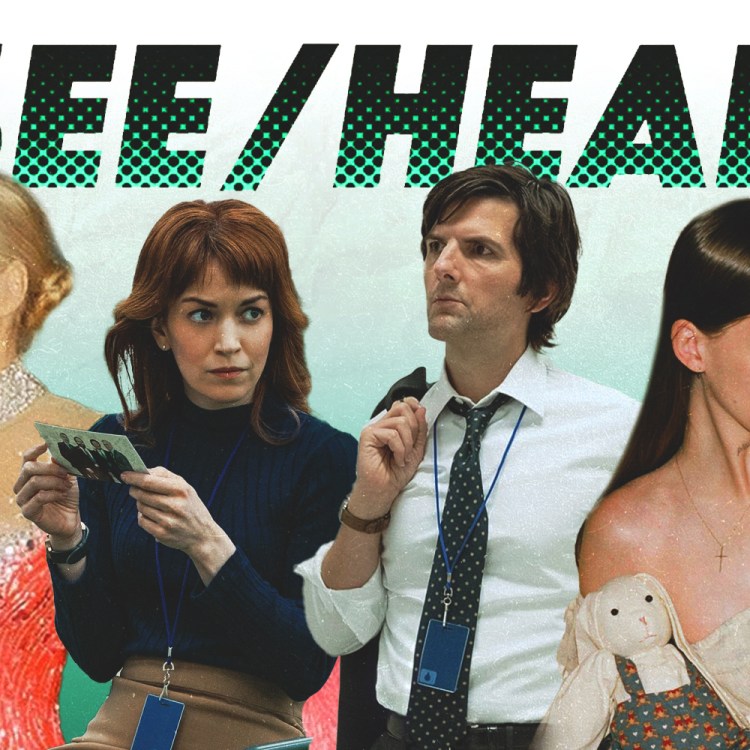This is the second in a series of pieces we’ll be running all month in conversation with Helen Macdonald’s Vesper Flights, the InsideHook Book Club pick for September. You can sign up for our Book Club email to receive important updates, announcements and notifications here.
“Oh my gosh, I’m sorry. There’s a vulture flying right outside my window,” says Lori Arent. “How cool is that? Literally, it’s a turkey vulture who’s just soaring. That is a sign or something.”
I’ve dialed up Arent, the assistant director at the University of Minnesota’s Raptor Center, to reflect on her long career rehabilitating eagles, hawks, owls and other birds of prey, but the raptors wait for no man or phone interview. They’ve always seemed intent on weaving themselves into Arent’s life, and she’s not alone.
“You know, it’s interesting because that happens all the time,” says Dr. Julia Ponder, executive director at The Raptor Center, when I ask how often she talks to strangers about her unique place of employment. “But usually they’re telling me their story about an animal they found, about a bird they saw, about their personal experience.”
Why does that happen? When meeting Ponder or Arent, internationally renowned raptor experts, at, say, a dinner party, why are people more keen to talk about their own encounters with the avian kingdom?
Maybe it’s because birds of prey are the closest most Americans get to the wild we have lost through the expansion of our species. A lion in a zoo or even an elephant on a safari — those are sanitized experiences. But a bald eagle swooping over your head during a morning jog, a turkey vulture soaring in your backyard or a hawk diving into a house window and stunning itself (which happened at my parents’ house years ago), these trigger a thrilling mix of awe, danger and a reminder that, as writer Helen Macdonald put it, “the world is not here just for us.”
I bring up the hawk story because when that happened, my family called The Raptor Center; they said to wait and call back if it didn’t wake up. (The bird saw our small dog through the window, dove, hit the glass, then fell back stunned into an empty flower pot like a perfect backboard shot. It later woke up and flew away.) In Minnesota, people take the institution, which is part of the U of M College of Veterinary Medicine, for granted. But as Ponder explains, The Raptor Center has become the preeminent institution of its kind since its founding in 1974.
“It’s been a leader in developing new techniques in research and, most importantly, in training. We’ve trained hundreds of veterinarians and veterinary students from around the world. At last count, it was like 27 different countries that have come to study with us, and then that network has stayed tight,” she explains. “It’s just an amazing place.”
Throughout their careers, Ponder and Arent have personally saved and overseen the rehabilitation of thousands of birds, from rare California condors to common red-tailed hawks. As Ponder notes, “Almost all of the birds … that come in, come in because of some conflict or problem that happened at the intersection with humans.”
I wanted to hear those stories, stories that take place at the juncture of human expansion and our ever-shrinking wild places, told by leading scientists who have devoted their lives to the raptors many of us see but, for the most part, don’t take the time to fully understand.
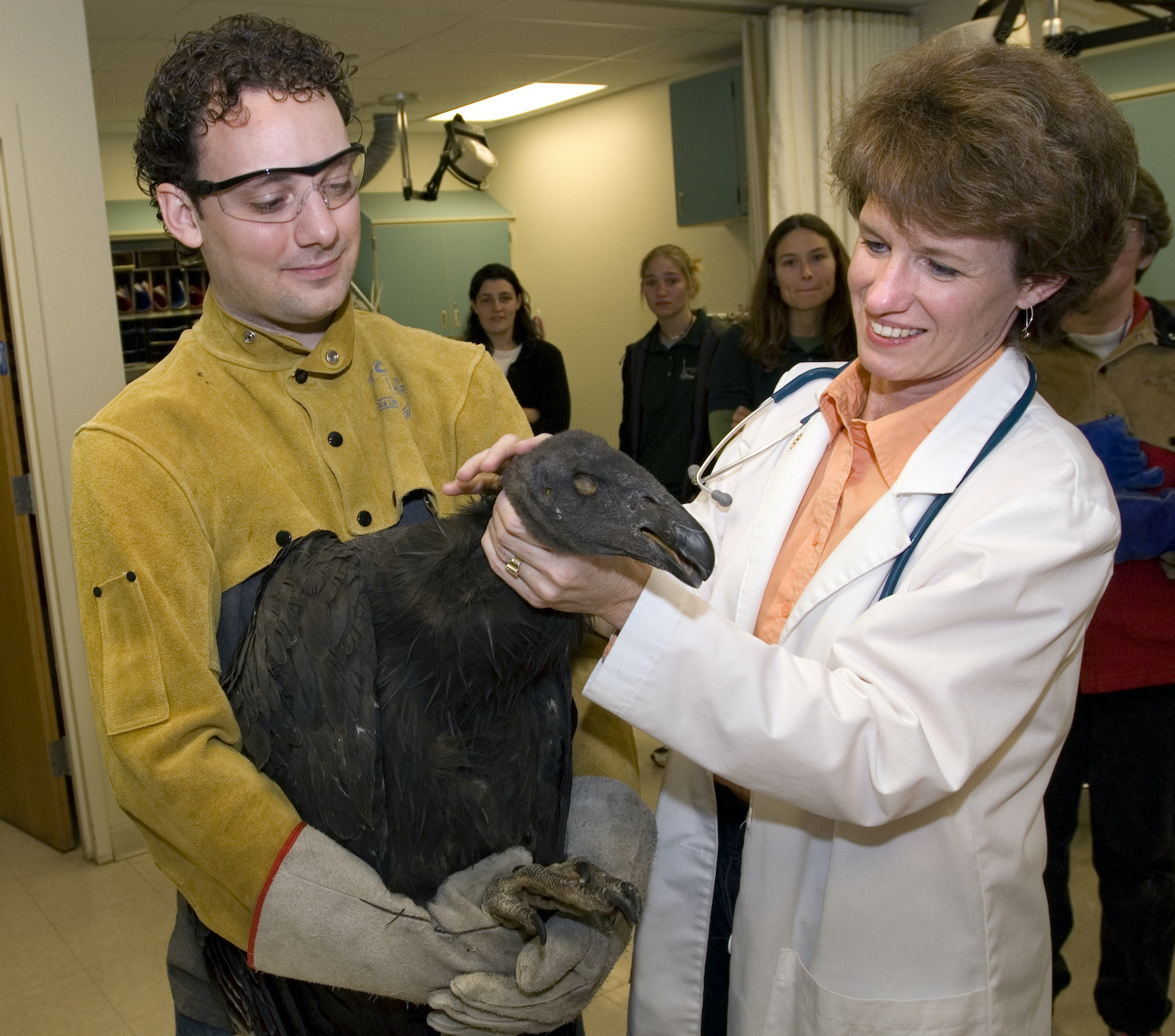
The California Condor
Dr. Julia Ponder, Executive Director at The Raptor Center
“Many years ago, we had a California condor from the Grand Canyon that was shipped to us because it had a fractured wing. That was a very high-profile case. That bird at the time — if you know anything about California condors, they’re highly endangered and they were totally out of the wild. The last few were brought into captivity when things were going really badly. This bird that came to Minnesota to be treated at The Raptor Center was actually, at that time, the first wild-hatched condor since they were reintroduced to the wild.
“We had it for several weeks as we treated its fracture, and then sent it back down to the Grand Canyon to be released where it belonged. It was quite amazing to have your hand on a representative of a species that there were less than 300 of left in the world at the time. Plus, they’re just so amazing and prehistoric and massive.
“The suspicion — and of course nobody was there to see what happened — was that either possibly it was hassled by a golden eagle, because it was a young bird, it was a hatch-year at the time, or it got kind of crossways with a gust of wind and got slammed into the wall or something. But we don’t know.”
The Red-Tailed Hawk
Lori Arent, Assistant Director at The Raptor Center
“I grew up being an animal person — dogs were my thing. I went to the University of Wisconsin in Milwaukee for an undergrad degree in zoology. Now, keep in mind, this was 30 some years ago. When I was there, I decided to volunteer with the local humane society, which was a mile from the campus … At the same time, a wildlife rehabilitation facility was starting up at the humane society. I stayed with them for the majority of my undergraduate career. I did kind of gravitate naturally towards the birds, and there was one hawk, a red-tailed hawk, that was going to be permanently disabled. It had two broken wings.
“They were trying to decide if it would be a good educational ambassador, but nobody really had the time to try to figure that out. I’m like, ‘Well, I will do it.’ I had no idea what I was doing. I had no experience or anything, but like they always do, the birds taught me what I needed to know — that created just a love for raptors in general.
“Then I started to really look at after graduation, what was I going to do? Graduate school seemed like the most reasonable thing. I searched around a little and came across the University of Minnesota which had this Raptor Center. I thought, ‘Wow, I could continue learning about the birds as I’m doing my master’s work.’ That’s exactly what happened. In fact, I ended up bringing that red-tailed hawk up to Minnesota and placing it at Oxbow nature center in Byron. They took the bird and they had him for many, many, many years as an educational ambassador.”
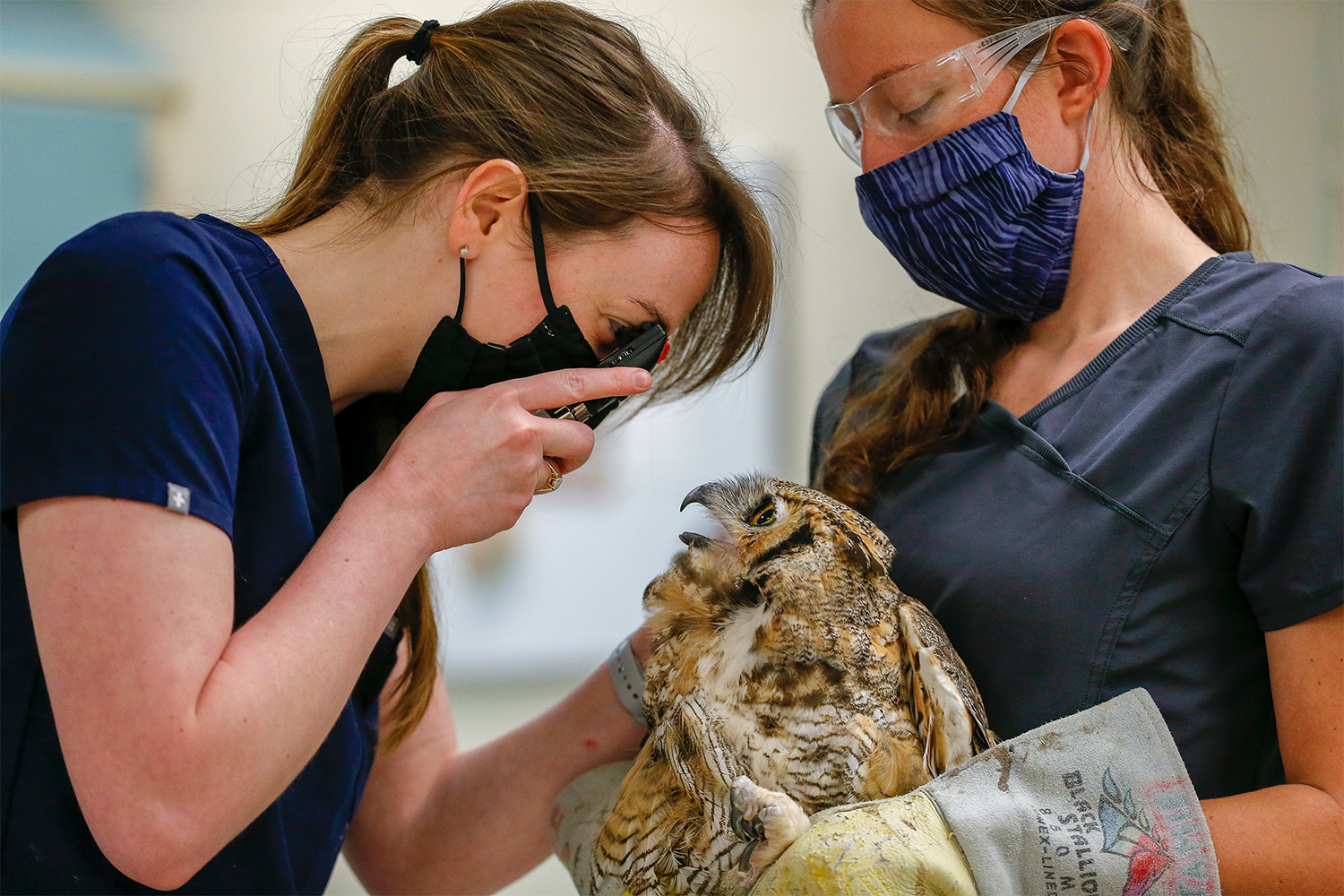
The Great Horned Owl
Dr. Julia Ponder
“Somebody was driving and knew they’d hit something, and they didn’t know what it was. They stopped the car, got out to look around, couldn’t find anything and drove on home. When they got home, it turned out that they hit an owl, it fractured the grill of the car, the plastic grill, and it was actually perched right behind the bumper as they drove home 60 miles-an-hour down the highway.
“They called us, and actually the car had to have somebody take the tire off to retrieve the owl. It was quite an ordeal. It was a classic example of people being incredibly supportive of saving this owl. The owl was okay, and the best part is that the owl was banded.
“When we release animals, we band them with a federal band so that they can be tracked if they’re ever found. The owl had actually previously been to The Raptor Center several years earlier. So one, we know it survived after its original injury. Two, we had pictures from the original injury. And in the original injury, the bird got its wing caught by a fishing hook in some fishing line hanging in a tree. A DNR officer had had to wade out to free this bird who was hanging by its wing connected to a fishing hook from a tree. So we have that picture, and we have pictures of the same bird, many years later, behind the grill of a car. I am amazed that this bird just kept surviving.”
The Prairie Falcon
Lori Arent
“The one bird that really changed my life, not just professionally but personally also, was a prairie falcon. It came from South Dakota and it had been shot. It had a simple wing fracture. It healed well. At that point, I had just started my position there as rehabilitation coordinator. Part of my job was to recondition the birds once they healed and get them ready for release, but this bird would not fly. We exercise them, we have a program where we exercise them on a long tether — it’s called creance exercise. For some reason, this bird would not fly. I could not figure it out.
“The vets at the time looked at the bird with me. There was no physical reason. I’m like, ‘Oh great, what do I do?’ Well, at the same time, there was a person that was contracted by the Department of Ag at the university to do pest bird control. In the experimental agricultural plots they would have issues with sparrows and starlings that were damaging the crops. They contracted with a falconer to fly his birds in the field and scare these birds off. He walked into The Raptor Center one day and I just started chatting with him. I said, ‘Man, I have this bird and I just don’t know what to do.’ He decided to work with me to get this bird to fly, and we did. We actually then took it back to South Dakota, to the Badlands, and released it there.
“It needed motivation to fly. We ended up flying it free, we used falconry techniques. Now, normally we exercised these birds on a tether because they’re not in any way trained. We had to take the time … to train this bird so we could get it back. Then we would free fly. It just needed motivation, it needed a reason to fly. We got permission to fly it on pigeons, or even some of the sparrows and starlings that were in the Ag fields. I mean, it just needed that motivation.
“The reason why this changed my personal life as well is because [the falconer] ended up becoming my husband. Not only did we help the bird, but we also bonded together through this. I learned a ton from him, and I still do. I mean, he’s one of these amazing people who just has an inherent ability to understand birds, raptors. You ask him, ‘Well, how do you know?’ He goes, ‘I don’t know. I just know.’ I’ve learned so much from him over the years and have been able to, hopefully, share a little of that knowledge with the people who are now coming up under me.”
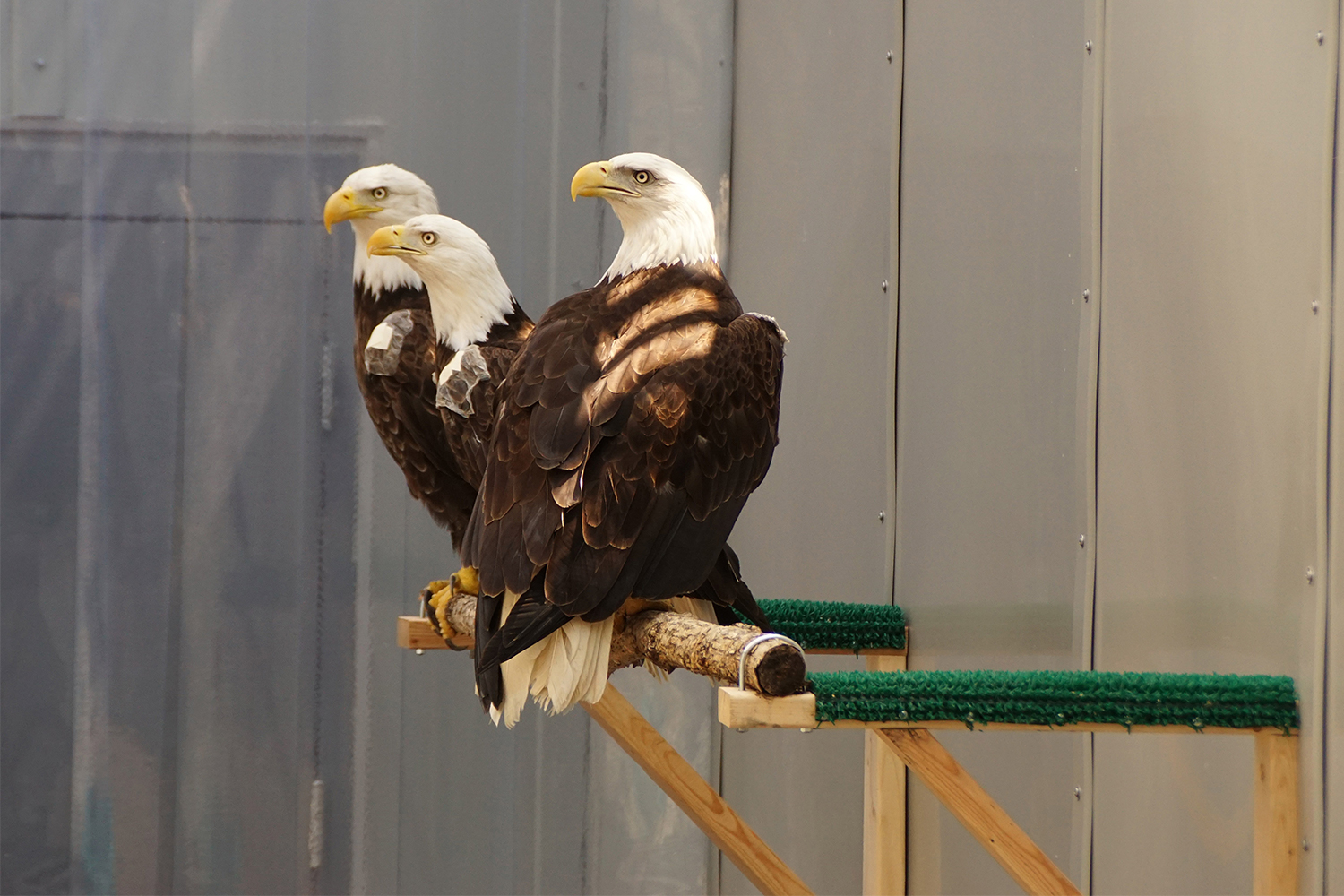
The Bald Eagle
Lori Arent
“The number of bald eagles that have adapted to living near people has definitely increased. At The Raptor Center, about three or four years ago, our number of admissions of bald eagles almost doubled. We would be anywhere from 80 to 100 a year, and now we’re 180 to 200 a year. They’re all over the place. They’re not just juveniles, they’re adults. There’s an equal mix between city and rural.
“[But] the number-one problem for raptors, in general, is habitat loss. There’s no question there. That is why they are forced to move into urbanized areas. That’s why they are running into more obstacles and having more issues, just because they’re being forced to be in close proximity to people. Then above and beyond that, in Minnesota, one thing that has been and continues to be an issue is lead poisoning in bald eagles.
“No amount of lead is normal for a biological system. We test all the eagles that come in for lead — it’s a blood test. It’s pretty simple to do. Anywhere from 25% to 30% have clinical lead toxicity, and about 90% to 95% have lead residues in their blood. As I said, no amount of lead is normal in a biological system. We’ve done research over the years, we’ve done educational efforts over the years, and what we’ve concluded is that the majority of the eagles are getting lead from eating entrails of deer that are left in the field, or maybe a deer is shot and not recovered, and then it dies later on or is hit by a car, and then eagles will go and scavenge it. Deer hunting really seems to be the major driver for lead toxicity, at least in the upper Midwest.
“Our admissions, when we start to see them, coincide exactly with a week or two after deer season starts, in both Wisconsin and Minnesota. There’s a lot of evidence. What we’re really trying to do now, and what we’ve learned is that if you tell people not to do something, then they want to do it even more. Instead of saying, ‘Don’t use lead,’ now we know there’s a safer alternative. Now our approach is, ‘Use copper.’ It’s safer for the environment. It’s safe if you ingest it, which you know people are ingesting some of these small shards of lead if they’re eating the deer meat. It’s a totally different approach to the problem.”
This article was featured in the InsideHook newsletter. Sign up now.
